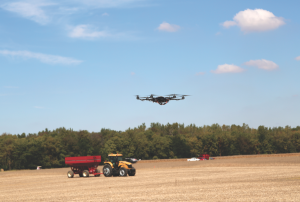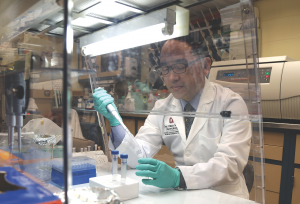Across the street from an abandoned industrial site in an older, economically challenged neighborhood, formerly vacant lots have been fitted with raised garden beds and season-extending hoop houses to allow neighborhood residents to grow fresh produce year-round. The food will be donated to schools and residents in a food desert, which is an area that lacks grocery stores within walking distance.
In partnership with the city of Dayton, Ohio State University Extension supports the Vacant to Vibrant project, which offers city dwellers the ability to grow their own foods and the opportunity to become food entrepreneurs. The project allows participants access to fresh local foods, job training, economic security and neighborhood revitalization.

Urban agriculture benefits Ohio by transforming neighborhoods through the production and distribution of food to cultivate a sense of community through food-related education and sustainable economic development.
OSU Extension supports urban agriculture in all Ohio counties, in an effort to increase access to local foods by helping create community gardens that promote urban agriculture — such as the Edgemont Solar Garden in Dayton — as well as opportunities for vocational agricultural training. Other efforts include classes on growing and marketing produce and basic agricultural principles.
ESSENTIALS
- According to Dayton Mayor Nan Whaley, urban agriculture, which allows cities to put vacant lots into use, creates opportunity for the future and can be a sustainable way to bring money into a community.
- In one year in Cuyahoga County, OSU Extension provided 33 urban agriculture workshops attended by 452 community members.
- OSU Extension also supports
239 Cleveland-area community gardens that yield nearly $3.1 million in produce annually. - According to the U.S. Census Bureau’s Urbanized Area and Urban Cluster designations, 81 percent of Ohio’s population is urban.
- More than 1,200 OSU Extension Master Gardener Volunteers in nine of Ohio’s most populated counties provide more than 61,000 service hours annually to address local gardening needs.









